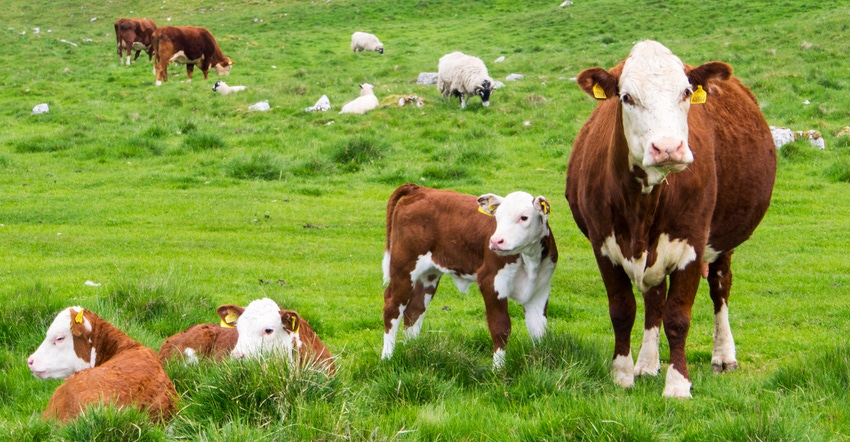
When you think of beef cattle, likely you think of states such as Texas, Oklahoma, Missouri, Nebraska, South Dakota and Kansas, which are the top beef-producing states. But persistent drought, skyrocketing transportation costs and high feed prices may start pushing the national beef herd east, according to Scott Brown, a livestock economist with the University of Missouri.
“I think we’re going to see the beef herd moving east if dry weather persists,” Brown says. “All indications are that we have already started moving the dairy herd east. We’re seeing that in California due to high transportation and feed costs. Higher corn prices have us moving beef back to the Midwest.”
Not enough pasture
Brown says there is a lack of pasture and feed in many states west of the Mississippi River due to continued drought. Oklahoma, Kansas, Nebraska, North Dakota, South Dakota, Montana and Wyoming all had drought this past year.
“Higher corn prices have us moving beef back to the Midwest,” he says. “I am hearing beef heifers are moving back into the Dakotas.”
In addition to beef shifting from Western states to the Midwest, Brown believes if drought continues to plague Western states, we will start to see beef moving to Southeastern states as well.
“If this dry weather pattern continues for the long run, I definitely see beef moving east out of states like Nevada, California, Utah and Arizona — all the states west of Oklahoma, Kansas and Nebraska,” Brown explains. “And maybe we will just quit grazing public lands. I think the current administration would be in favor of less grazing of public lands, which would accelerate the beef herd to shift east.”
Dairy has moved out of the Southeast, Brown notes. “If you’re not going to milk cows there, what are you going to do with that land?”
He notes that it’s tough to make predictions on weather trends because weather is always changing.
“Moving the beef cows east has a lot to do with weather trends. So, if drought was to evaporate, then I don’t think beef will shift east,” he says. “But if we’re going to have this kind of dry weather, the beef herd will shift to Corn Belt and Southeastern states.”
Cattle prices promising
According to Brown, the outlook remains bright for cattle prices because of both demand and supply factors.
“Once the current abundance of market-ready cattle supplies can be processed out of feedlots, supplies will tighten significantly,” he says.
USDA is projecting a 3% decline in beef production this year, including a 5% decline in the second half of 2022. Brown says while it is difficult to know exactly when the pendulum will shift to much tighter cattle supplies, “that day is approaching soon. And when it does, there is a strong potential for sharply higher cattle prices.”
About the Author(s)
You May Also Like






